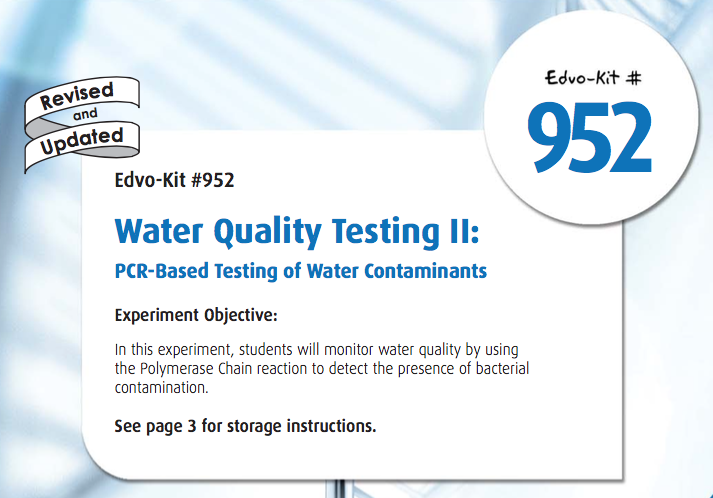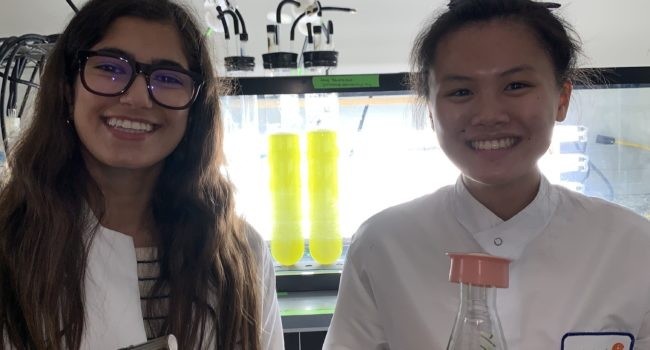Water Quality Testing II (Edvotek)
 see.isbscience.org/curriculum/community-contributed/water-quality-testing-ii-edvotek/
see.isbscience.org/curriculum/community-contributed/water-quality-testing-ii-edvotek/
Download PDF: Water PCR_952Edvotek (1)
Buy this kit: http://www.edvotek.com/952
EXPERIMENT OBJECTIVE:
In this experiment, students will monitor water quality by using the Polymerase Chain reaction to detect the presence of bacterial contamination.
LABORATORY SAFETY:
Be sure to READ and UNDERSTAND the instructions completely BEFORE starting the experiment. If you are unsure of something, ASK YOUR INSTRUCTOR!
-
Wear gloves and goggles while working in the laboratory.
-
Exercise caution when working in the laboratory – you will be using equipment that can be dangerous if
used incorrectly.
-
Wear protective gloves when working with hot reagents like boiling water and melted agarose. DO NOT
MOUTH PIPET REAGENTS - USE PIPET PUMPS.
-
The bacteria used in this experiment are not considered pathogenic. Regardless, it is good practice to follow
simple safety guidelines in handling and disposal of materials contaminated with bacteria.
-
Wipe down the lab bench with a 10% bleach solution or a laboratory disinfectant.
-
All materials, including petri plates, pipets, transfer pipets, loops and tubes, that come in contact with
bacteria should be disinfected before disposal in the garbage. Disinfect materials as soon as possible after use in one of the following ways:
-
Autoclave at 121° C for 20 minutes. Tape several petri plates together and close tube caps before
disposal. Collect all contaminated materials in an autoclavable, disposable bag. Seal the bag and place it in a metal tray to prevent any possibility of liquid medium or agar from spilling into the sterilizer chamber.
-
Soak in 10% bleach solution. Immerse petri plates, open tubes and other contaminated materials into a tub containing a 10% bleach solution. Soak the materials overnight and then discard. Wear gloves and goggles when working with bleach.
-
-
Wear gloves, and at the end of the experiment, wash hands thoroughly with soap and water.
-
LABORATORY NOTEBOOKS:
Address and record the following in your laboratory notebook or on a separate worksheet.
Before starting the Experiment:
-
Write a hypothesis that reflects the experiment.
-
Predict experimental outcomes.
During the Experiment:
• Record (draw) your observations, or photograph the results.
Following the Experiment:
-
Formulate an explanation from the results.
-
Determine what could be changed in the experiment if the experiment were repeated.
-
Write a hypothesis that would reflect this change.






